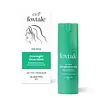What's inside
What's inside
 Key Ingredients
Key Ingredients

 Benefits
Benefits

 Concerns
Concerns

 Ingredients Side-by-side
Ingredients Side-by-side

Water
Skin ConditioningTitanium Dioxide
Cosmetic ColorantZinc Oxide
Cosmetic ColorantEthylhexyl Methoxycinnamate
UV AbsorberButyl Methoxydibenzoylmethane
UV AbsorberOctocrylene
UV AbsorberButylene Glycol
HumectantLecithin
EmollientCeramide NP
Skin ConditioningPhospholipids
Skin ConditioningAluminum Hydroxide
EmollientStearic Acid
CleansingHelianthus Annuus Seed Oil
EmollientThioctic Acid
AntioxidantSodium Polyacrylate
AbsorbentXylitol
HumectantHectorite
AbsorbentHydroxyethylcellulose
Emulsion StabilisingNiacinamide
SmoothingCeramide AP
Skin ConditioningCeramide EOP
Skin ConditioningCholesterol
EmollientSodium Lauroyl Lactylate
EmulsifyingCaprylic Acid
CleansingGlyceryl Stearate
EmollientSodium Hyaluronate
HumectantPhytosphingosine
Skin ConditioningMilk Extract
Skin ConditioningTocopheryl Acetate
AntioxidantSqualane
EmollientSorbitol
HumectantResveratrol
AntioxidantRubus Fruticosus Fruit Extract
AstringentPotassium Sorbate
PreservativeParfum
MaskingWater, Titanium Dioxide, Zinc Oxide, Ethylhexyl Methoxycinnamate, Butyl Methoxydibenzoylmethane, Octocrylene, Butylene Glycol, Lecithin, Ceramide NP, Phospholipids, Aluminum Hydroxide, Stearic Acid, Helianthus Annuus Seed Oil, Thioctic Acid, Sodium Polyacrylate, Xylitol, Hectorite, Hydroxyethylcellulose, Niacinamide, Ceramide AP, Ceramide EOP, Cholesterol, Sodium Lauroyl Lactylate, Caprylic Acid, Glyceryl Stearate, Sodium Hyaluronate, Phytosphingosine, Milk Extract, Tocopheryl Acetate, Squalane, Sorbitol, Resveratrol, Rubus Fruticosus Fruit Extract, Potassium Sorbate, Parfum
Water
Skin ConditioningPropylene Glycol
HumectantHydroxyethyl Acrylate/Sodium Acryloyldimethyl Taurate Copolymer
Emulsion StabilisingGlycolic Acid
BufferingGlycerin
HumectantLactic Acid
BufferingGluconolactone
Skin ConditioningOctyldodecanol
EmollientOctyldodecyl Xyloside
EmulsifyingPEG-30 Dipolyhydroxystearate
EmulsifyingMandelic Acid
AntimicrobialPolyacrylate-13
Polyisobutene
Polysorbate 20
EmulsifyingTocopherol
AntioxidantPanthenol
Skin ConditioningPhenoxyethanol
PreservativeSodium Phytate
Ethylhexylglycerin
Skin ConditioningSodium Hydroxide
BufferingParfum
MaskingWater, Propylene Glycol, Hydroxyethyl Acrylate/Sodium Acryloyldimethyl Taurate Copolymer, Glycolic Acid, Glycerin, Lactic Acid, Gluconolactone, Octyldodecanol, Octyldodecyl Xyloside, PEG-30 Dipolyhydroxystearate, Mandelic Acid, Polyacrylate-13, Polyisobutene, Polysorbate 20, Tocopherol, Panthenol, Phenoxyethanol, Sodium Phytate, Ethylhexylglycerin, Sodium Hydroxide, Parfum
Ingredients Explained
These ingredients are found in both products.
Ingredients higher up in an ingredient list are typically present in a larger amount.
Parfum is a catch-all term for an ingredient or more that is used to give a scent to products.
Also called "fragrance", this ingredient can be a blend of hundreds of chemicals or plant oils. This means every product with "fragrance" or "parfum" in the ingredients list is a different mixture.
For instance, Habanolide is a proprietary trade name for a specific aroma chemical. When used as a fragrance ingredient in cosmetics, most aroma chemicals fall under the broad labeling category of “FRAGRANCE” or “PARFUM” according to EU and US regulations.
The term 'parfum' or 'fragrance' is not regulated in many countries. In many cases, it is up to the brand to define this term.
For instance, many brands choose to label themselves as "fragrance-free" because they are not using synthetic fragrances. However, their products may still contain ingredients such as essential oils that are considered a fragrance by INCI standards.
One example is Calendula flower extract. Calendula is an essential oil that still imparts a scent or 'fragrance'.
Depending on the blend, the ingredients in the mixture can cause allergies and sensitivities on the skin. Some ingredients that are known EU allergens include linalool and citronellol.
Parfum can also be used to mask or cover an unpleasant scent.
The bottom line is: not all fragrances/parfum/ingredients are created equally. If you are worried about fragrances, we recommend taking a closer look at an ingredient. And of course, we always recommend speaking with a professional.
Learn more about ParfumWater. It's the most common cosmetic ingredient of all. You'll usually see it at the top of ingredient lists, meaning that it makes up the largest part of the product.
So why is it so popular? Water most often acts as a solvent - this means that it helps dissolve other ingredients into the formulation.
You'll also recognize water as that liquid we all need to stay alive. If you see this, drink a glass of water. Stay hydrated!
Learn more about Water